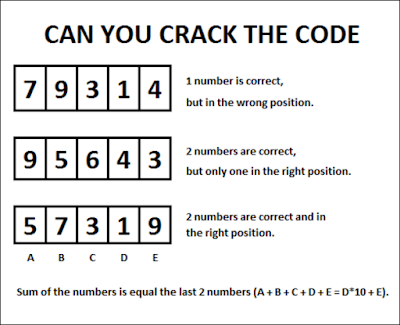Test of an Examiner
Five students - Adam, Cabe, Justin, Michael and Vince appeared for a
competitive exam. There were total five questions asked from them from
which were two multiple choice questions (a, b or c) and three were
true/false questions. Their answers are given as follows:
Name I II III IV V
Cabe c b True True False
Adam c c True True True
Justin a c False True True
Michael b a True True False
Vince b c True False True
Also, no two students got the same number of correct answers. Can you tell the correct answer? Also, what are their individual score?
Name I II III IV V
Cabe c b True True False
Adam c c True True True
Justin a c False True True
Michael b a True True False
Vince b c True False True
Also, no two students got the same number of correct answers. Can you tell the correct answer? Also, what are their individual score?





















